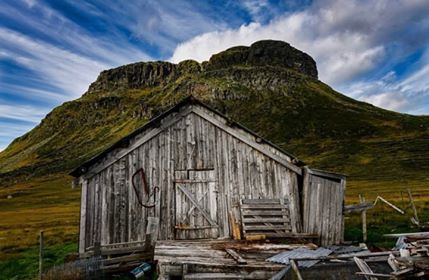The Norwegian landscape is filled with stories of mythical creatures and fairy tales. Stories about trolls, the Neck, goblins, and many other creatures have been an important part of the Norwegians peoples’ imagination for centuries. The stories have served an important function in giving people an explanation for natural phenomena and how the wild and enchanting, but also dangerous, Norwegian landscape was created. Exploring the natural world and Norwegian intangible cultural heritage is therefore closely linked and should be enjoyed as a journey through the landscape – this is now possible with the new storytelling app Hidden which seeks to bring the myths to life through augmented reality technology.
Myths and Nature: How things came to be and warnings against dark forces
In Norwegian folklore the landscape was filled with “Hulderfolk”, Hidden-people, such as elves and Haugafolk who were invisible to most humans. Also known as people of the underground, they interacted with humans and animals alike and could become visible only if they wanted to show themselves to humans or if a person was in possession of a special hat. The stories of these mythical figures are often local and connected to unexplanatory alterations in the landscape around the farm or the animals’ behavior. People could locate where these invisible helpers or tormentors resided because they were believed to live in mounds, often very visible in the flat farming landscape.
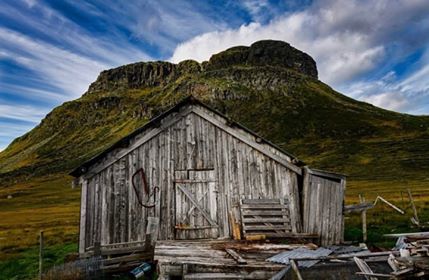
Photo: Ian Brodie for Hidden.
The most famous and characteristic creature from Norwegian folklore is the Troll, a monstrous ugly being with a large nose, messy hear and sometimes three heads. Living in caves in the mountains, the trolls are not friendly to humans, and in several stories they seek to kidnap young beautiful princesses or eat humans when they smell “ a Christian man’s blood”. The main obstacle for trolls is that they are not very smart and they freeze to stone when the sun rises. In terms of the myths’ connection to the landscape this is where the trolls are most visible. Norway is a country known for its fjords and mountains, and the people believed that many of these mountains were fossilised trolls who were captured for eternity as they tried to hide from the sun. In the northern part of Norway, we can find a story like this about several trolls chasing and hiding from each other who end up becoming the most spectacular landscape formations in the region, amongst them the Seven Sisters mountain range.
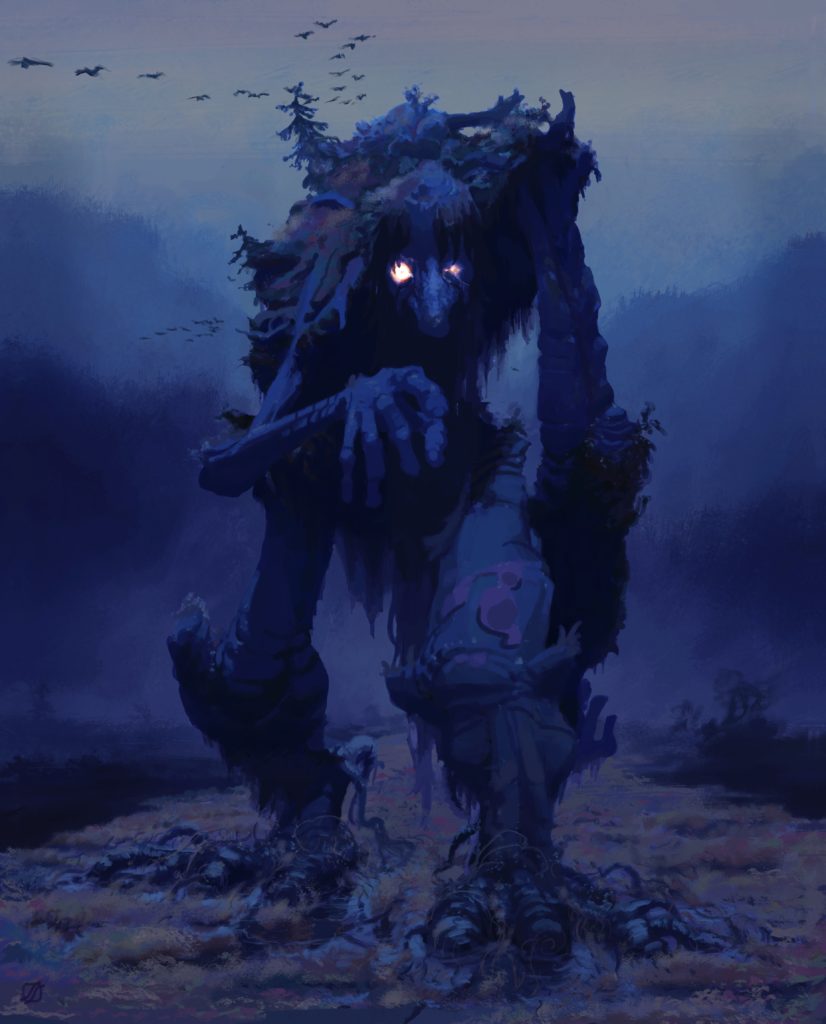
The trolls also served a purpose in explaining many large rocks, “troll stones”, situated on strange places that not possibly could have been moved by humans. It was believed that the trolls had thrown these stones when they were fighting each other or they were throwing them at churches because they did not like the church bells. In addition to shaping the landscape, the trolls also played a role in disciplining people, making them stay inside during the night and not working on holidays – if human made too much noise the trolls would become angry and cook them for dinner. Another myth deeply connected to the landscape and natural phenomena that has a similar disciplinary aspect is the story of the Northern Lights. It was believed that the magical light on the winter sky could capture you if you were outside in the dark. These stories were told to children so they would not venture outside in the cold and dark night.
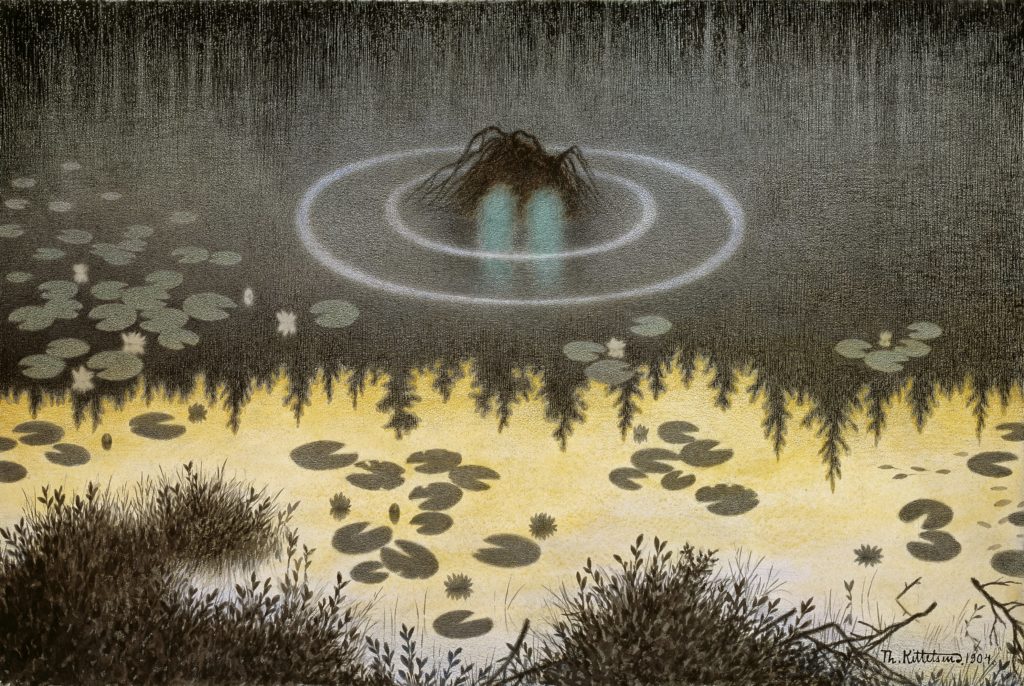
The streams and waterfalls of the Norwegian landscape were believed to be inhabited by the Neck, a shape-shifting creature luring in the waters. There are many different stories about the Neck, including one where he turns into a horse and tricks young children to sit on his back and kidnap them. In Norway he is famous for being the master of playing the violin and if someone wanted to learn the art they had to befriend him, also called Fossgrimen in myths connected to his musical talent. Like many of the other creatures in Norwegian folklore he can be very dangerous and dark, but he can also be helpful to those who know how to approach him. His duality might be linked to the equal dual nature of the element and landscape with which he is linked. The many streams and violent waterfalls of the Norwegian landscape are both enchantingly beautiful, like his music, and very dangerous if you act carelessly. Again the story of this dangerous water spirit was often told to children so that they would not get to close to the waters.
The Legends Come to Life
The trolls and other mythical creatures are still popular stories, but their importance has been declining with the coming of the modern and scientific era. With scientific explanations and other entertainment occupying more of people’s everyday life, people no longer continue to tell the myths and local stories from one generation to the next. Therefore many stories, especially the more local ones connected to a specific farm or village, and the rich intangible heritage is in danger of disappearing.
The founders of the new Hidden app wanted to do something about this, and engage young people with their cultural heritage by telling the stories in a new way through mobile technology. In the app, which is free to download, there are hundreds of stories available for the user – but they have to walk to the actual location of the selected story to get full access. A map shows the user where to go, and gives basic information on whether it is a story about a troll, or a hulder (a beautiful mythical woman-like creature with a cow tail often luring young men to marry them), or information about a historical site. By linking the stories to the place of origin it seeks to preserve the heritage in the environment in which it was created and keep it as an integrated and accessible part of the culture and everyday life of people in the region.
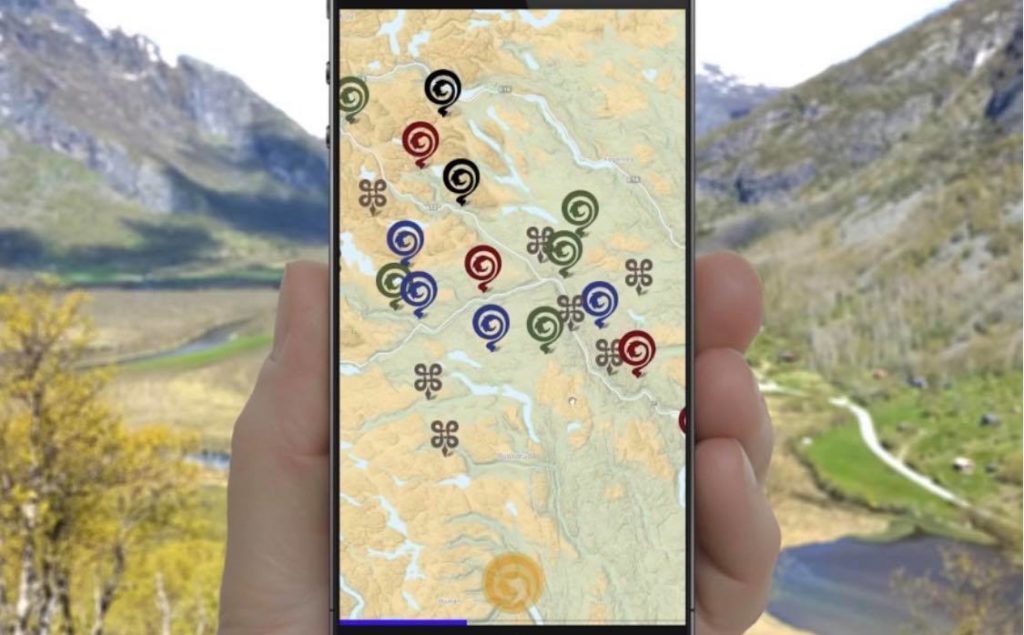
The most innovative aspect of the project is to bring the creatures from the myths and legends to life with the use of augmented reality technology (AR). This technology makes it possible to see and experience the mythical creatures as a part of your reality through your phone. Professional artists, programmers, and graphic designers have been working for months to bring these mythical creatures from Norwegian folklore to life so that humans finally may see them as they shape and interact with the landscape around them. Through visualising storytelling the app seeks to capture the attention of younger users as well as highlighting the importance of experiencing the stories in the landscape they are a part of. The same technology is also used to visually “reconstruct” historical buildings, sites, and ruins so the users may explore it in an easy and accessible way.
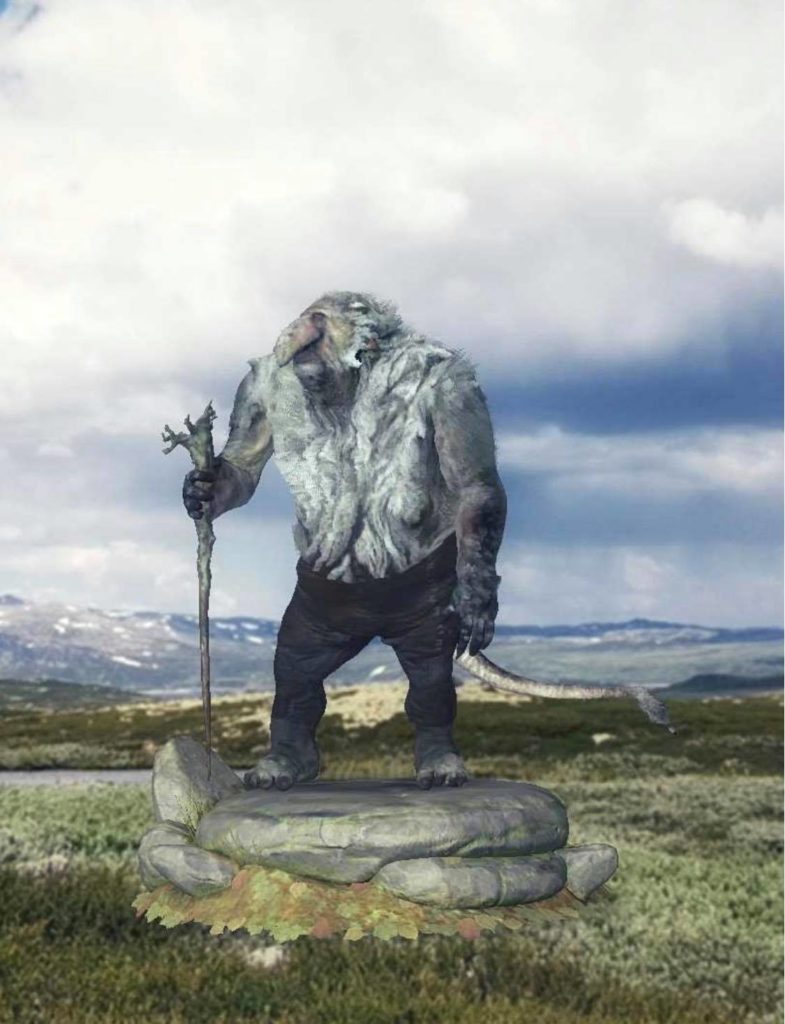
The Hidden app launched on the 1st of July 2019, after two and a half years of hard work on both the production of the app and financing the project. There are now several hundred stories available for the users, and some of the sites have implemented the AR-technology. The further goal of the project is to make the app a global platform that can be utilized by different regional counties and municipalities, local historical organizations and tourist organizations to promote cultural heritage sites to visit in their area.
XXXXXXXXXXXXXXXXX